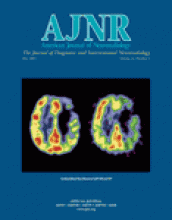EditorialEDITORIAL
Higher Field Strength for Proton MR Spectroscopy
Oded Gonen
American Journal of Neuroradiology May 2003, 24 (5) 781-782;

References
- ↵
- ↵
- Barker PB, Hearshen DO, Boska MD. Single-voxel proton MRS of the human brain at 1.5 T and 3.0 T.Magn Reson Med 2001;45:765–769
- Gonen O, Gruber S, Li BSY, Mlynárik V, Moser E. Multivoxel 3D proton spectroscopy in the brain at 1.5 versus 3 Tesla: a signal-to-noise and resolution comparison.AJNR Am J Neuroradiol 2001;22:1727–1731
- ↵Vaughan JT, Garwood M, Collins CM, et al. 7T vs. 4T: RF power, homogeneity, and signal-to-noise comparison in head images.Magn Reson Med 2001;46:24–30
- ↵O’Neill J, Schuff N, Marks WJ, Jr, et al. Quantitative 1H magnetic resonance spectroscopy and MRI of Parkinson’s diseaseMov Disord 2002;17:917–927
- ↵Zhu XH, Merkle H, Kwag JH, et al. 17O relaxation time and NMR sensitivity of cerebral water and their field dependenceMagn Reson Med 2001;45:543–549
- ↵Lei H, Zhu XH, Zhang XL, et al. In vivo 31P magnetic resonance spectroscopy of human brain at 7 T: an initial experienceMagn Reson Med 2003;49:199–205
In this issue
Advertisement
Higher Field Strength for Proton MR Spectroscopy
Oded Gonen
American Journal of Neuroradiology May 2003, 24 (5) 781-782;
Jump to section
Related Articles
- No related articles found.
Cited By...
- No citing articles found.
This article has not yet been cited by articles in journals that are participating in Crossref Cited-by Linking.
More in this TOC Section
Similar Articles
Advertisement










